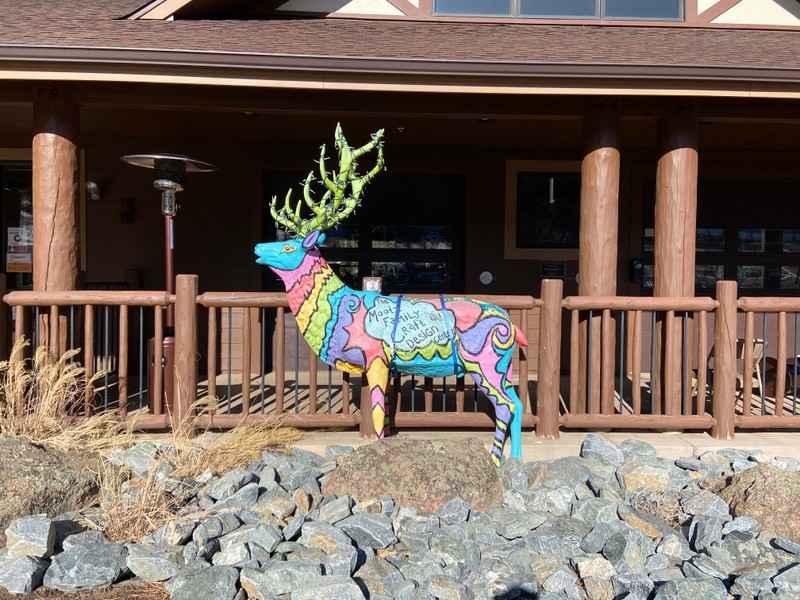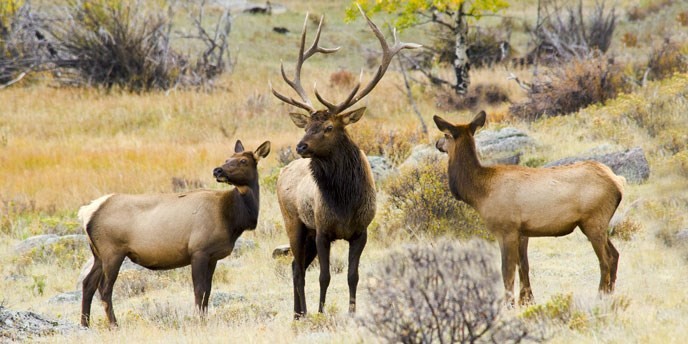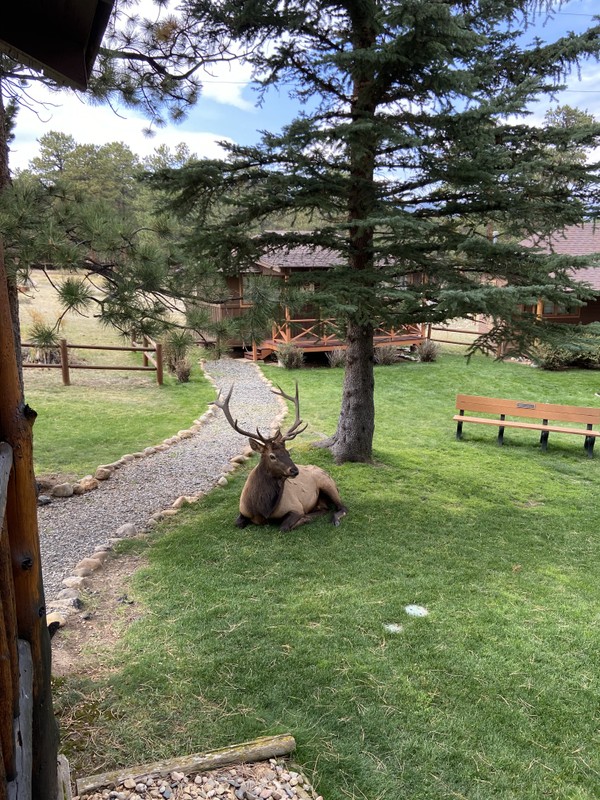Painted Elk Sculpture
Introduction
Text-to-speech Audio
Images
Andrew the Elk

Elk in Rocky Mountain National Park

Male elk relaxing in the grass outside the Lula W. Dorsey Museum

Backstory and Context
Text-to-speech Audio
Elk are among the many different types of wildlife that live in and around Rocky Mountain National Park. Because Estes Park and YMCA of the Rockies are so close to the park, it is very common to see elk walking the streets of downtown or relaxing in the open spaces in front of the Administration Building at the Y. The best time to see elk is during their rutting season in the fall. Typically, you can see one male elk (bull) with many females (cows). If you're lucky, you might even get to hear the distinct sound of the bulls bugling. If you visit in the summer, however, you might get to see some baby elk as they are typically born around June.
Elk are very large animals and can weigh over 700 pounds. It is estimated that there are over 2,000 elk that live around the Estes Park area. Just like deer, male elk grow and lose their antlers every year. While the antlers are growing, there is a layer of soft, velvet skin that is shed during the summer. If you see Aspen trees with lots of dark scratch marks, that is likely from elk or deer using the tree to remove this velvet from their antlers.
In the 1800s, people moved west and settled in the Estes Valley. They hunted elk extensively and by the 1890s, only a few elk remained. In 1913 and 1914, before Rocky Mountain National Park was established, 49 elk were moved from Yellowstone National Park to this area by the Estes Valley Improvement Association and the United States Forest Service. All the elk in the Estes Valley today are descendants from those elk from Yellowstone.
Sources
National Elk Refuge - Elk Facts, U.S. Fish and Wildlife Service. Accessed November 13th 2020. https://www.fws.gov/nwrs/threecolumn.aspx?id=2147612672#:~:text=As%20one%20of%20the%20largest,can%20weigh%20over%20700%20pounds..
An Insider's Guide to Wildlife Watching in Estes Park, Visit Estes Park. Accessed November 13th 2020. https://www.visitestespark.com/blog/post/insiders-guide-to-wildlife-watching-in-estes-park/.
History of Elk in Rocky Mountain National Park, National Parks Service. Accessed November 22nd 2020. https://www.nps.gov/romo/learn/nature/elk.htm.
https://www.nps.gov/romo/learn/nature/images/Elk_cover_Bull_cows_688x344.jpg?maxwidth=1200&maxheight=1200&autorotate=false
